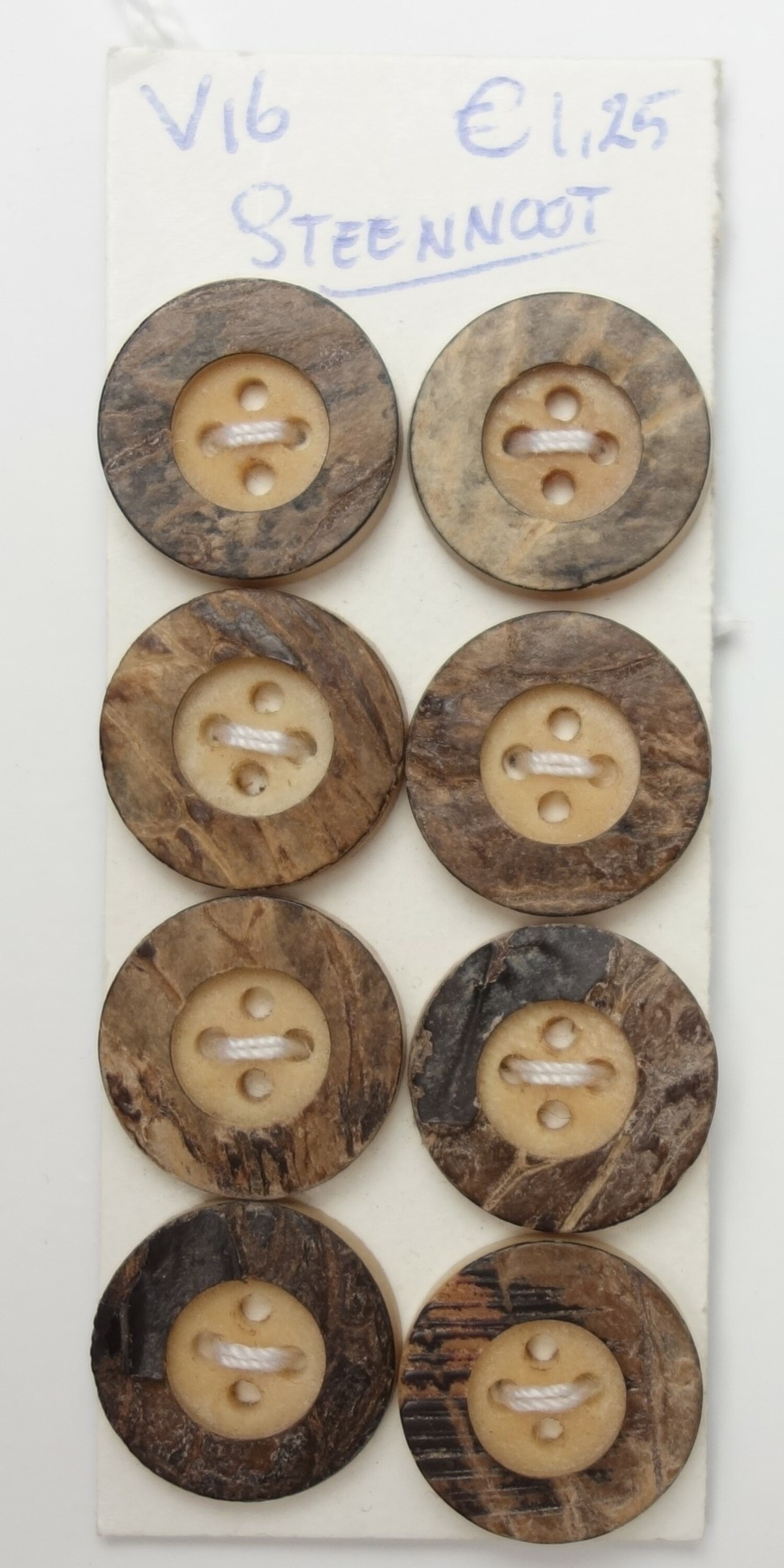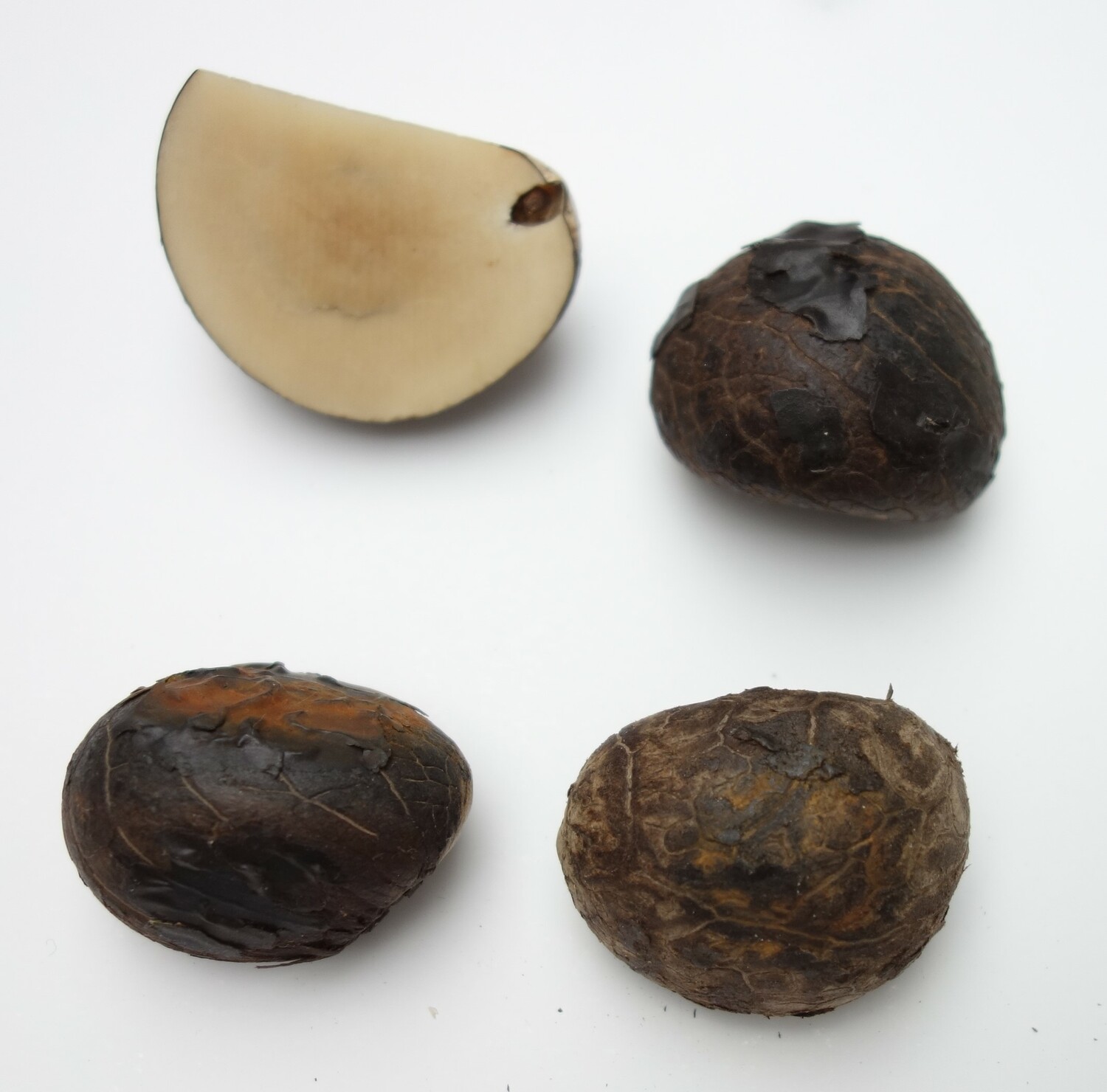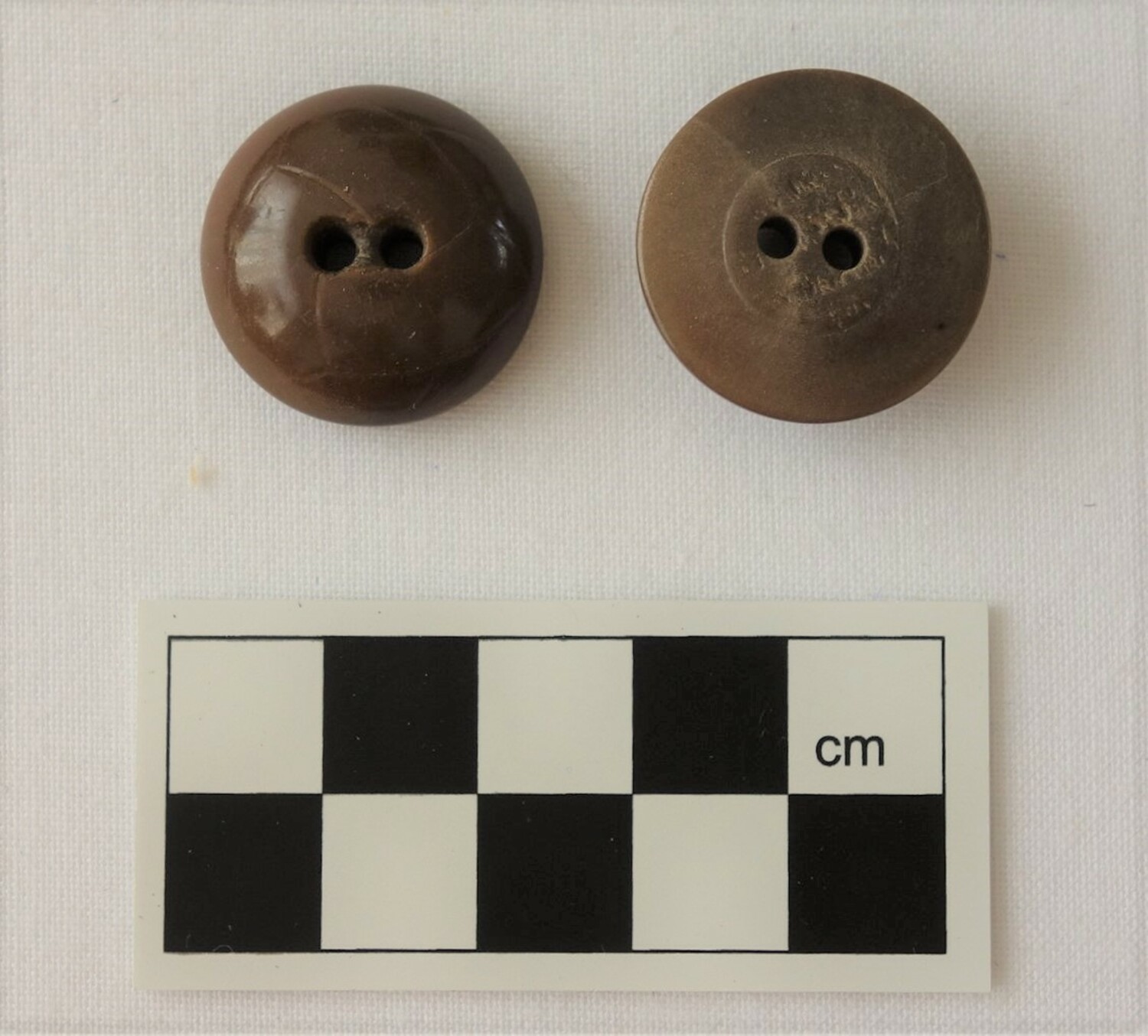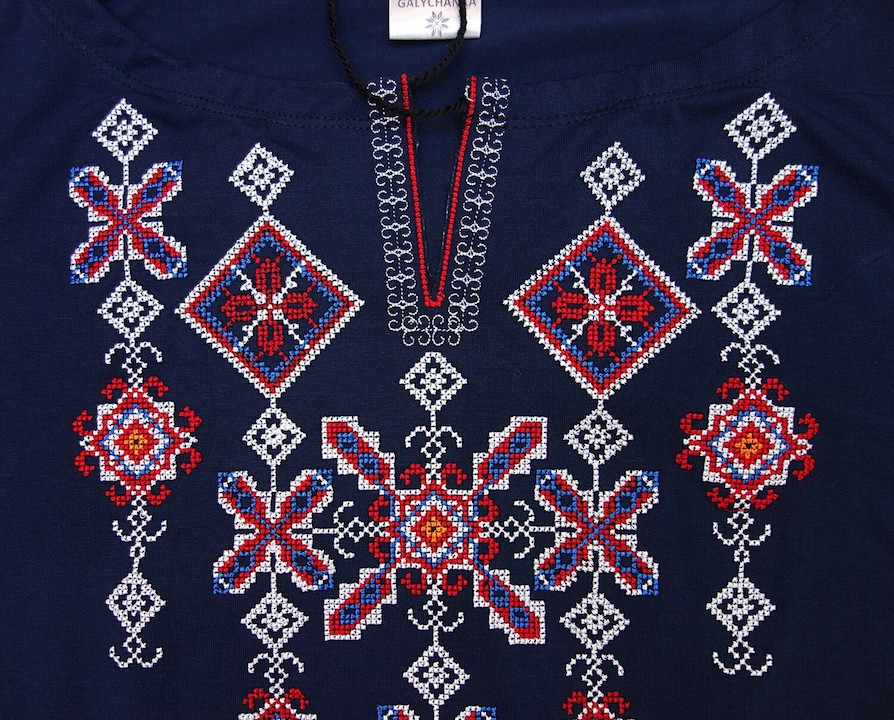Nut buttons

Over the last year we have been (slowly) adding more and more Winschoten items to the TRC Collection and we are now looking at the various boxes of buttons.
Among these boxes there are several examples that look as if they were made of bone or ivory, but are in fact made of slices of corozon nut (TRC 2025.0851 to TRC 2025.0855). Equally interesting, there are some of the actual nuts themselves (TRC 2025.0856a-d).
Corozon nuts
Corozon nuts come from the tagua palm trees of the Arecaceae family, which grow in Central and South America. More specifically, they grow in southern Panama, Ecuador, Columbia, Bolivia, in parts of Brazil and Peru. Based on the information that came with the nuts, the examples now in the TRC Collection derive from Ecuador (P. aequatorialis).

The seeds are harvested when ripe. The outer layer (pericarp) is removed and then the kernels are allowed to dry. With respect to the corozon nut, once the kernel (endosperm) has thoroughly dried, they become very hard, scratch-free, water proof and durable and can be used for a variety of objects, including buttons.
Corozon nuts, ballast and buttons
It would appear that dried corozon nuts were first introduced to Europe in the late 18th and early 19th century as ballast (rather than sand) on some wooden sailing ships, in particular, for the ships sailing between South America and Germany.

Ivory nut buttons started to be manufactured in various countries in Europe by the mid-19th century. In general they are flat disc forms with two to four sewing holes. Some also have a dark brown layer around the outer edges (TRC 2025.085).
The TRC Collection includes other examples of ivory nut buttons, which come from the USA and date to the 1930s. One set of buttons is dome-shaped and they were carved to imitate buttons made from strips of leather (TRC 2018.1768a-b, compare TRC 2018.2197a-d).

There has been a trend to re-introduce corozo nut items in order to replace small, elephant-ivory products (including parts for bagpipes!). There is a movement among some bespoke clothing groups to re-introduce corozo nut buttons, bearing in mind that they are more expensive than modern plastic buttons, but they are of vegetable-origin and sustainable.
Gillian Vogelsang-Eastwood, 14 July 2025

















